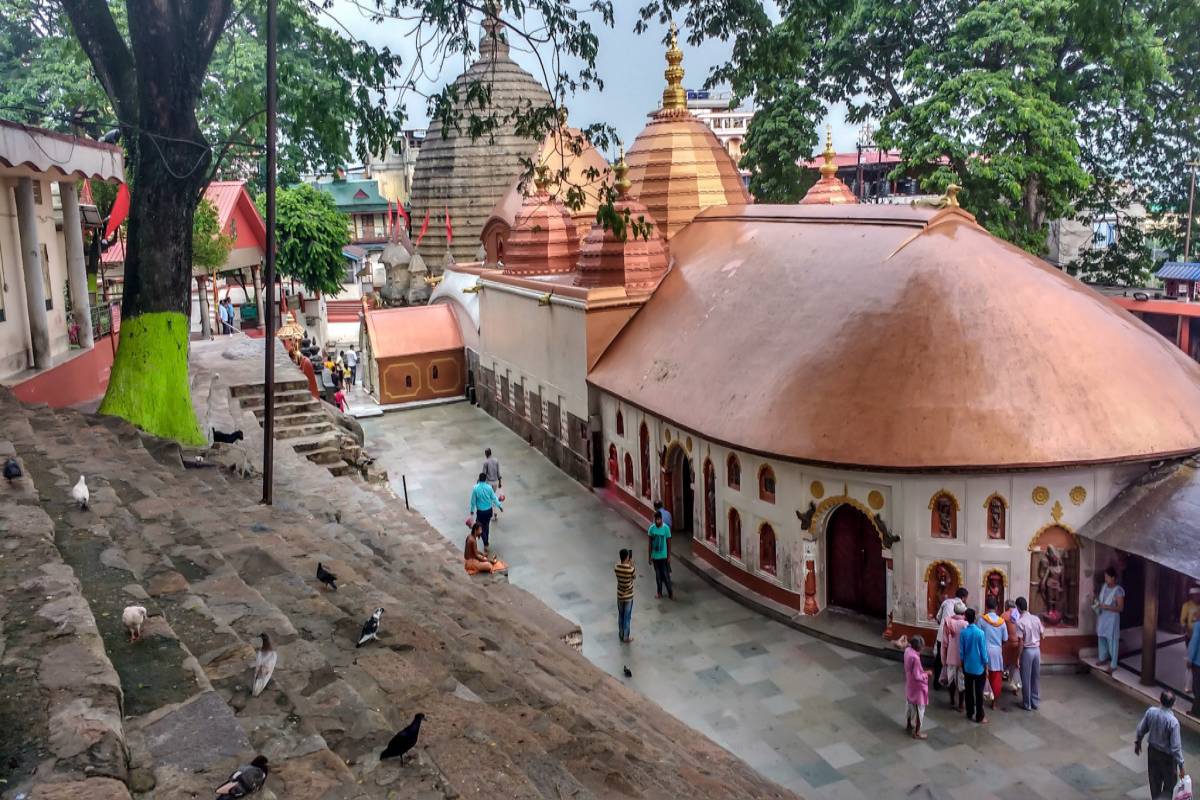Maa Kamakhya or Maa Kameshwari is believed to be the goddess of desire. The Kamakhya temple is a world-famous place of reverence situated in Assam and is among one of the 108 Shakti peeths. This shrine is located on a hill next to the Brahmaputra River, which flows through China, India, and Bangladesh.
The river turns blood red for three days in June every year, and this event is followed by a grand Ambubachi Mela celebration dedicated to the goddess. Kamakhya Devi is also famous as the bleeding Goddess.
The legendary womb and yoni of the goddess are supposedly installed in the compound of the temple. It is believed that in the month of June the goddess bleeds or menstruates. The turning red of river Brahmaputra River near Kamakhya is associated with this belief. The temple remains closed for three days, and holy water is distributed among the devotees.
Advertisement
There is no scientific proof behind the turning red of the river, some people claim the priests pour vermilion into the water. According to ancient scriptures, the Devi Shakti fought with her husband, Lord Shiva, and attended her father’s great Yagya without Shiva’s approval. It is a custom to pay respect to lord Shiva before the start of Yagya but lord Shiva was not invited and Shakti’s Father, Daksha refused to pay respect to him. Unable to bear the insult, Devi Shakti committed suicide by burning herself in the fire of Yagya. Furious, Lord Shiva placed Devi Shakti’s body on his shoulder and began his Tandava, the dance of destruction.
Lord Vishnu who wanted to stop Shiva from destroying everything cut Devi Sakthi’s body with his Sudarshan Chakra. The 108 body parts of the goddess fell on the earth and the places where the parts fell are called as the Shakthi Peeths. It is believed that the Kamakhya temple is set in the place where Shakti’s womb and yoni fell.
The scientific explanation behind the river turning blood red?
The first reason is that the soil of the area is rich in iron content naturally which already gives the water blood-like red colour.
The second reason may be that the shrine of Kamakhya is situated in mountains, which have a large deposit of Cinnabar (mercury sulfide) which gives it red colour.
The rock pieces gathered from the Kamakhya Temple, are usually sold in the name of Kamiya Sindoor. It is often claimed that this vermilion has the immense ability to control the minds of people, so it is also called the Vashikaran Sindoor.
The Sindhoor is utilised for making spiritual items that are believed to offer several benefits. Though these reasons are sufficient to explain the reason behind the presence of red rocks in the region. But why the Brahmaputra River turns red only for three days in the month of June, is still beyond explanation.
Devotees maintain it is the magic of the Goddess Kamakhya.
